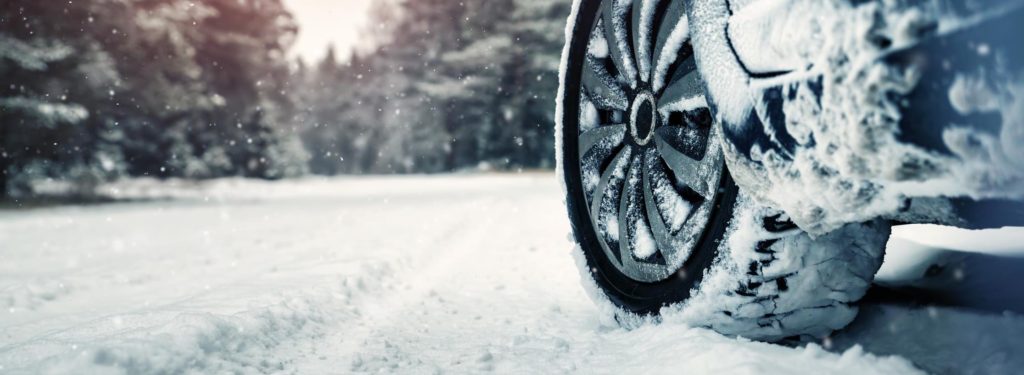
When the vehicle stops for a long time in winter, the water temperature in the engine is low. If the car is parked at night and started the following day, this is usually a cold start. If you do not warm up the car, the oil will not have time to circulate. The vehicle can't run smoothly on the road, which causes damage to the engine.
1.4 Bad water temperature sensor
If the engine temperature is not high enough for both fuel and lubricant, more fuel will be sprayed during the cold start to meet the power requirements.
Poor fuel atomization at low temperatures can decrease ignition energy, affecting dynamics and making the car shake. Aging ignition coils, aging or leaking high voltage wires of spark plugs can also lead to this issue.
Carbon deposits can absorb some fuel, which makes the ECU judge wrong. For example, if the ECU actually controls the injection of some fuel, but only 90% actually enters the cylinder (the other 10% is absorbed by carbon).
Even if the remaining 90% is entirely burned, the required power will not be achieved. The shuddering is inevitable.
When there is too much carbon inside the engine, the petrol ejected from the cold start injector will be absorbed by the carbon in large quantities, resulting in a lean air-fuel mixture, making it difficult to start until the petrol absorbed by the carbon is saturated. The car starting can be easy.

The gasoline adsorbed on the carbon will be sucked into the cylinder by the engine's vacuum suction after the engine starts. The combustible mixture will be lean and rich at times, causing an unstable idle speed after a cold start.
The lower the temperature, the greater the amount of oil required for a cold start. The carbon deposits will affect the smoothness of the cold start. Carbon can have a negative impact on the proper functioning of the engine.
For example, when there is too much carbon in the combustion chamber, the compression ratio will increase to form many incandescent surfaces, causing early combustion and deflagration, shortening the engine's service life.
Carbon deposits on the valve and its seat ring working surface will cause air leakage. As a result, the engine is difficult to start and works powerlessly. The valve can be vulnerable.
Carbon gum on the valve guide and valve stem will accelerate the wear and tear or even cause the valve stem in the valve guide movement astringent and get stuck, failing the sticky valve.
Carbon accumulation in the piston ring groove makes the piston ring's side gap and back gap become small, or even no gap, resulting in the lost elasticity and defective cylinder.
The carbon accumulation in the injector nozzle will make different amounts of fuel injected into each cylinder, causing the engine to shake.
Too much carbon in the spark plug will cause leakage and malfunction. Too much carbon at the throttle will also cause starting difficulties and idle shaking failure.
In order to make the engine work better, you should usually pay attention to car maintenance. Clean the carbon deposits in various places regularly. That's the only way to ensure a smooth starting when it gets cold.
The ignition gap and timing control of the spark plugs can vary after a long term of consumption, resulting in a discrepancy between actual and theoretical situations, with the result that some cylinders produce less power. It can lead to shuddering.

1.4 Bad water temperature sensor
If the engine starts at low temperatures, but the sensor "reports" the higher temperatures, the ECU will activate the fuel injection in the condition of that higher temperature. Of course, the amount of fuel will be small, so it is natural for the engine to shake.
The minimum operating temperature of the oxygen sensor is 370 -°C in a closed-loop controlled car. If the car is just started, the oxygen sensor does not work because the temperature in the exhaust pipe does not reach 370 °C.
In this case, the ECU makes an error in its judgment, and its control of the air-fuel mixture and ignition timing through the actuators is incorrect. As a result, the power output reduces, causing a shuddering.
Installing an automotive calorifier
The main motor of the calorifier drives the plunger fuel pump, the combustion fan and the atomizer. The fuel pump sends the inhaled fuel to the atomizer via the delivery pipe.
The atomizer atomizes the fuel by centrifugal force. It mixes with the air inhaled by the combustion fan in the main combustion chamber, where the incandescent electric plug ignites it and then bends back after full combustion in the rear combustion chamber, passing through the inner wall of the water jacket and the heat sink above, transferring the heat to the coolant.
The coolant is circulated throughout the piping system under the operation of the circulating water pump (or thermal convection) to achieve the purpose of heating. The exhaust pipe discharges the exhaust emissions from the combustion.
First, check the water pump from the outside for signs of leakage in the drain hole, thermostat joint, upper and lower water pipe joints, water discharge port, water tank cover and water storage tank. If there is any leak, the cause should be found and immediately eliminated.
Check the freezing point of the antifreeze. Generally speaking, the freezing point of the antifreeze liquid is 5 to 10°C lower than the minimum temperature when the vehicle is running. For example, in Boston, antifreeze with a freezing point of -25 to -30°C will ensure a safe winter.
Note that the antifreeze level is generally at a distance of about 10 mm from the water tank fill port. Or you can add similar antifreeze in accordance with the standard scale on the refill tank. Never fill the antifreeze or water too full. Leave sufficient space for thermal expansion.
Finally, check the thermostat. If it is not working correctly, and the engine is working at low or high temperatures for a long time, it will intensify the engine's wear and tear and shorten the service life. So make sure that the thermostat is in good condition.
More importantly, the thermostat must not be removed. In general, the engine will be damaged within about 20000 to 30000 km of driving if it is removed.
The oil that plays the role of lubrication in a car engine is related to the engine's service life. Some drivers do not understand this. They casually change any brand of engine oil, which will easily cause faulty cylinders, abrasion and other mechanical accidents.
We should change the oil every 10000 km, while some engines require 7000 km or 5000 km. It depends on your vehicle's driving conditions and road conditions.
However, never add those unnecessary additives and wear agents when changing the oil. You must change the oil filter at the same time. If you don't do so to save money, the performance and effectiveness of the oil will be significantly reduced.
Snow and ice are troubles in winter. The first thing to do is to adjust the tires of all four wheels so that the adhesion to the ground is consistent, preventing side slips.
For vehicles with pneumatic brakes, the preload of the balance spring in the brake master cylinder should be reasonably adjusted.
If the preload is too large, the braking can't perform well. That is prone to accidents in winter. For vehicles with hydraulic brakes, you should also check the brake fluid, brake lines and brake pumps for leaks. Replace the brake fluid if there are leaks.

The hand brake also has to be adjusted. The braking action is made on the drive shaft by mechanical transmission. When the brake is working, the braking force is evenly distributed on the two rear wheels through the two half shafts, effectively preventing the braking deviation of the two rear wheels.
This means that you can prevent drifting when using the hand brake on icy roads, thus reducing the chances of an accident. The requirement for checking the hand brake is that when pulling the hand brake, the locking block makes no more than three sounds.
If it reaches five, the gap in the hand brake is too large. It must be adjusted to reduce the free travel. It effectively ensures safety.
",
 Lauritz Carolsfeld
Lauritz Carolsfeld  April 16, 2022
April 16, 2022